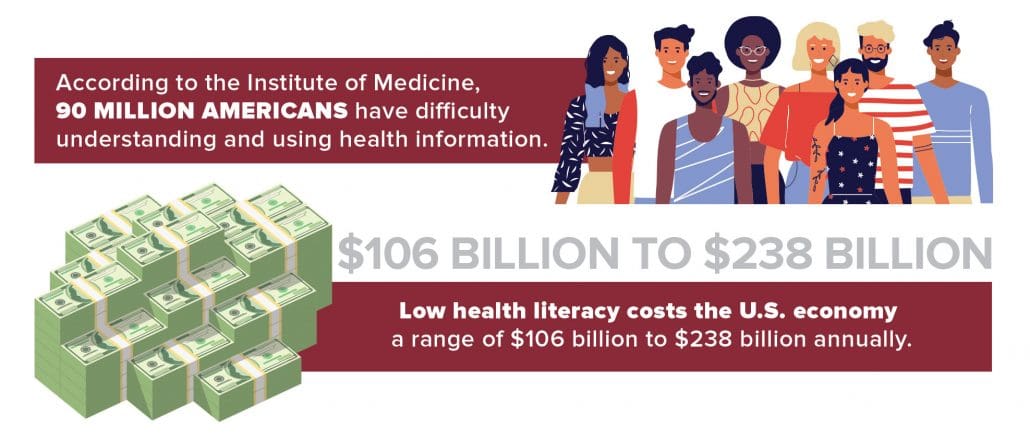Health Literacy
What is health literacy?
Health Literacy is defined by Healthy People 2010 as “the degree to which individuals have the capacity to obtain, process and understand basic health information and services needed to make appropriate health decisions.”
According to the Institute of Medicine, 90 million Americans have difficulty understanding and using health information.
What is the relationship between literacy and health care?
The National Network of Libraries of Medicine acknowledges the complex relationship between health care and literacy, citing the following:
- Literacy influences health knowledge, status and service
- Health status is influenced by socio-economic status
- Individuals with low socio-economic statuses are more likely to work in unhealthy or hazardous environments
The ability to read and comprehend health related information is critical when scheduling physician appointments, understanding prescription directions and completing insurance forms. The U.S. Department of Health and Human Services reports that those with low health literacy are more likely to have difficulties:
- Locating providers and services
- Completing medical history forms
- Seeking preventative health care
- Connecting risky behaviors and health consequences
- Managing chronic health conditions
The Journal of American Medical Assocation’s findings from 1995 suggest:
- Only 12% of U.S. adults have proficient health literacy
- Over a third of U.S. Adults – 77 million – have difficulty with basic health tasks, such as following directions on a prescription bottle
- Over three quarters of adults with less than a high school degree were at a below basic level or basic level for health literacy
- 44% of high school graduates and 12% of college graduates have below basic or basic health literacy
Who is most at risk to suffer the adverse consequences of health literacy?
While individuals from all backgrounds may have health literacy difficulties, the National Adult Literacy Survey cites that individuals of lower socio-economic status and older individuals have the most difficulties comprehending health care information. The U.S. Department of Health adds that minority groups are likely to be especially vulnerable.

How is low health literacy impacting the economy?
According to Low Health Literacy: Implications of National Health Policy Report, low health literacy costs the U.S. economy a range of $106 billion to $238 billion annually.
The Center on an Aging Society at Georgetown University cites that excess hospital costs resulting from low literacy levels include:
- Additional hospital visits – Those with low health literacy levels use more hospital resources than their higher health literacy counterparts.
- Extended hospital stays – A 1994 study concluded that of young adults staying overnight in hospitals, individuals with low health literacy levels had hospital stays averaging two days longer than those with higher health literacy levels.
- Excess tests and procedures
What resources are available to learn more about health literacy?
- Center for Health Care Strategies
- U.S. Department of Health and Human Services
- National Network of Libraries of Medicine
- Medical Library Association
- Institute of Medicine of the National Academics
Interested in learning more?
Unable to find answers to other questions pertaining to health literacy? Telephone our office at 216.776.6180 or send an email to contactus@literacycooper.wpengine.com for additional information and resources.


